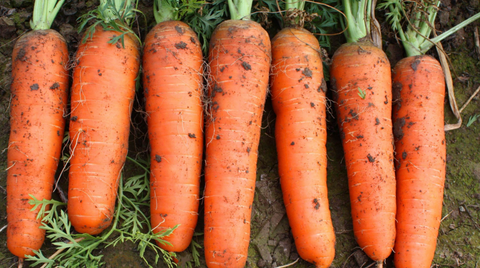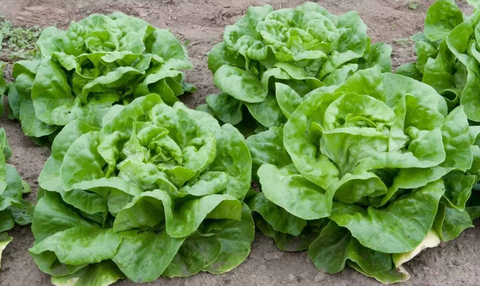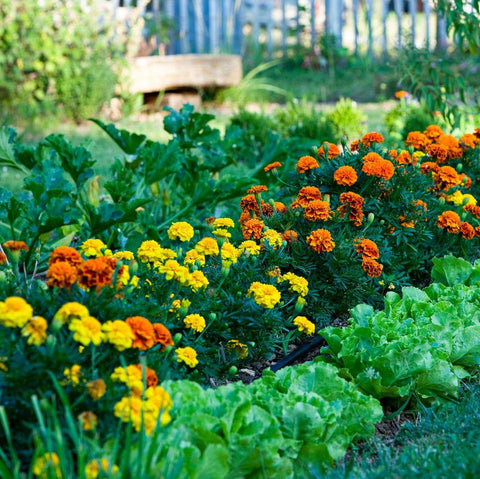In the realm of gardening, there exists a harmonious union between aesthetics and productivity. It's a concept that turns outdoor spaces into multifaceted wonders, where beauty and utility coexist. Welcome to the world of edible landscaping, where every plant in your garden not only delights the eyes but also fills your table with fresh, homegrown produce. In this comprehensive guide, we will explore the fascinating realm of edible landscaping, including what it is, its benefits, and how you can create an edible landscape in your very own home garden.The following content also has some reference value for raised garden beds.
Understanding Edible Landscaping
Edible landscaping is a gardening philosophy that transcends traditional boundaries. It seamlessly integrates the visual appeal of ornamental plants with the practicality of edible ones. Instead of segregating these two categories, edible landscaping envisions a garden where they coexist, intertwining to create a space that's not only visually pleasing but also highly productive.
At its core, edible landscaping encourages you to view your outdoor space as a canvas upon which you can paint a tapestry of colors, textures, and flavors. By blending ornamental and edible plants, you breathe life into your garden, transforming it into a living work of art.

The Benefits of Edible Landscaping
Embracing edible landscaping offers a multitude of advantages, both practical and aesthetic. Let's delve into some of the key benefits:
1. Aesthetic Beauty
Perhaps the most evident benefit of edible landscaping is its visual allure. This approach transforms your garden into an enchanting haven of colors and textures, engaging all your senses. Picture vibrant red tomatoes nestled amidst the lush green foliage of basil or the striking contrast of purple eggplants against the backdrop of sunflowers. With edible landscaping, your garden becomes a living, breathing masterpiece.
2. Sustainability
Edible landscaping harmonizes with sustainable gardening practices. By cultivating a diverse ecosystem where both beneficial insects and pollinators thrive, you can reduce the need for chemical fertilizers and pesticides. Additionally, growing your own food in your backyard minimizes the environmental impact associated with transporting produce from farm to market.
3. Fresh, Healthy Produce
Nothing compares to the satisfaction of harvesting your own homegrown vegetables and herbs. Edible landscaping provides you with a consistent source of fresh, organic produce right at your doorstep. You can enjoy the peak flavor, nutrition, and peace of mind that come from knowing precisely where your food originates.
4. Cost Savings
Over time, growing your own food can lead to significant cost savings. By replacing some store-bought produce with homegrown alternatives, you can reduce your grocery bills while potentially covering the expenses associated with gardening. This is not only financially rewarding but also environmentally responsible.
5. Connection to Nature
Tending to an edible landscape deepens your connection to the natural world. As you nurture your plants, you gain a profound appreciation for the changing seasons, the significance of soil health, and the intricate web of life that sustains your garden. It's an immersive experience that reconnects you with the rhythms of nature.
Now that we've explored the compelling reasons to embrace edible landscaping, let's shift our focus to practical steps on how you can bring this concept to life in your home garden or raised bed.

Creating an Edible Landscape in Your Home Garden
Whether you have a spacious garden or a modest backyard, you can implement edible landscaping principles to create a productive and beautiful space. Here's a step-by-step guide to help you get started:
1. Assess Your Space
Begin by evaluating your outdoor space. Consider factors like the available sunlight, soil quality, and the size of your garden. Understanding these elements will help you choose the right plants and layout for your edible landscape.
2. Plan Your Layout
Sketch a layout for your garden, keeping aesthetics and functionality in mind. Design your edible landscape with an artistic eye, placing taller plants at the back and shorter ones at the front to create depth and visual appeal. Think about how different plant varieties will complement each other in terms of color, texture, and form.
3. Choose a Diverse Plant Selection
The heart of edible landscaping lies in the diversity of your plant selection. Mix and match vegetables, herbs, fruits, and ornamental plants to create a harmonious blend of colors and textures. Here are some ideas for each category:
Vegetables:
- Tomatoes: Explore various heirloom varieties for a colorful display.
- Peppers: Opt for bell peppers, chili peppers, and sweet peppers to add pops of color.
- Eggplants: Include traditional purple varieties along with smaller, colorful cultivars.
- Zucchini and Squash: These plants not only produce delicious vegetables but also have broad leaves and vibrant blossoms that add visual interest.
- Kale and Swiss Chard: Both come in a range of colors and textures, making them ideal for ornamental use.
Herbs:
- Basil: Known for its lush, green leaves and fragrant aroma.
- Rosemary: Offers a striking vertical element with its woody stems.
- Thyme: Creates a low, creeping carpet of foliage with a delightful scent.
- Oregano: Adds a bushy, cascading growth habit with tiny leaves.
- Mint: Aromatic and fast-spreading, mint makes an excellent ground cover.
Fruits:
- Strawberries: The vibrant red berries and green foliage are both beautiful and tasty.
- Blueberries: Their compact bushes turn fiery red in the fall.
- Dwarf Fruit Trees: Consider planting apple, pear, or cherry trees if space allows.
Ornamental Plants:
- Sunflowers: Their towering stalks and bright yellow blooms are a showstopper.
- Marigolds: These cheerful flowers deter pests while adding a burst of color.
- Lavender: Delicate purple spikes emit a soothing fragrance.
- Calendula: Edible flowers in shades of orange and yellow are both pretty and practical.
4. Companion Planting
Incorporate companion planting principles to enhance the health and productivity of your edible landscape. Certain plants have natural affinities or deterrent effects on others, which can help with pest control and growth enhancement. For instance, planting marigolds near your tomatoes can deter aphids, or growing basil alongside your peppers can improve flavor and repel insects.
5. Vertical Gardening
Make the most of your garden's vertical space by incorporating trellises, arbors, or stakes. Vertical gardening allows you to grow vining vegetables like cucumbers, beans, or peas, maximizing your garden's potential while adding a vertical dimension to your landscape.
6. Succession Planting
Plan for succession planting to ensure a continuous harvest throughout the growing season. As you harvest one crop, replant the same space with another that thrives in the current season. For instance, after harvesting lettuce in early summer, replace it with heat-loving crops like peppers or beans.
7. Maintenance and Care
Regular maintenance is crucial for a thriving edible landscape. Ensure that you provide adequate water, mulch to retain soil moisture and suppress weeds, and feed your plants as needed. Be vigilant for signs of pests or diseases and address them promptly.

Conclusion
Edible landscaping is more than just a gardening trend; it's a transformative philosophy that infuses life and purpose into your outdoor space. By combining the visual allure of ornamental plants with the practicality of edible ones, you can create a garden that's not only beautiful but also highly productive. Whether you have a sprawling garden or a compact raised bed, the principles of edible landscaping can be tailored to suit your space and preferences.
As you embark on your journey to create an edible landscape, remember that it's a dynamic and evolving process. Your garden will change with the seasons, offering a constantly shifting tapestry of colors, textures, and flavors. Embrace the beauty of nature's bounty, and savor the rewards of a productive purpose in your garden. With edible landscaping, your outdoor space becomes a sanctuary of both sustenance and splendor, a true testament to the magic of gardening.









